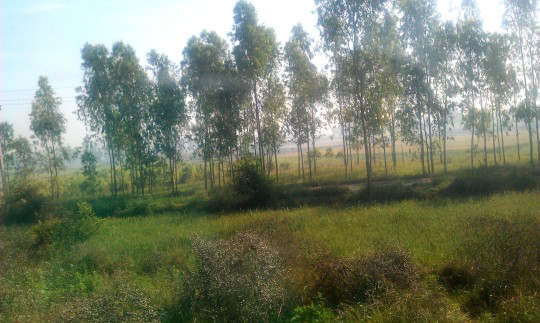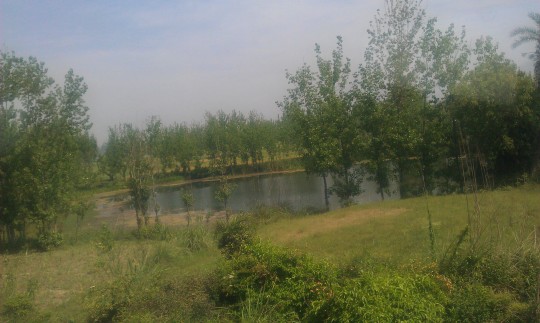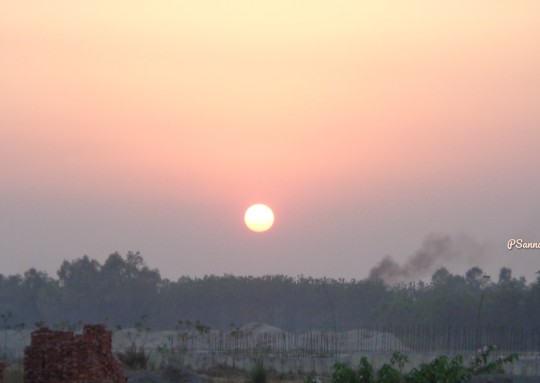#saharanpur Photography
Photo

Hello guy's.... @Vaasudevphotography What's up all my friends. I hope you are well... I am appriciate you are giving dignity and love to our {{Vaasudev photography}} ------------------------------------ I will not forget this gratitude.I am very grateful to all of you. Your appriciation will surely inspire me to provide better service to our Customer. keep loving us by sharing And liking my status with ur friends n friend. In a humble way... I m implore u to share And like Vaasudev photography. Immense thanks to all.stay with me with your love. Love u allll.... #yamunanagar #vaasudevphotography #yamunanagarjaghadri #jaghadri #jaghadri #jaghadritwincity #yamunanagartwincity ##yamunanagarmodeltown #virelpost #virel #malaysianfood #Malaysiabotanicalgarden #gym #wedding #albumeddting #weddingphotography (at Saharanpur) https://www.instagram.com/p/Cgy-7J1LRn5/?igshid=NGJjMDIxMWI=
#yamunanagar#vaasudevphotography#yamunanagarjaghadri#jaghadri#jaghadritwincity#yamunanagartwincity#yamunanagarmodeltown#virelpost#virel#malaysianfood#malaysiabotanicalgarden#gym#wedding#albumeddting#weddingphotography
0 notes
Text
There is one thing the photo must contain – the humanity of the moment...
Moment Capture by ##best Photography in Saharanpur LightNShade Photography
For Bookings, Call Now:- +91 97200 88489










#best Photography in Saharanpur#best Photography in Roorkee#best photographer in up#best Photography in up#up#saharanpur Photography#Roorkee Photography#neeraj yadav Photography#light N Shade Photography#best photographer in Saharanpur#best photographer in roorkee#bestphotography#portrait#blureffect#blured#shimla#hills#bestphotographer#photography#photograpgher#lightnshade#lighting#bestpic#picoftheday#justgoshoot#lense#capture#skycapture#prewedding#weddingvibes
1 note
·
View note
Text

4 notes
·
View notes
Photo

Simran & Harjot #couplephotoshoot #couplepicture #punjabicouple #Delhi #saharanpur #prewedding #makeup #beautiful #girl #shoot #pretty #lovely #eyes #marvellous #top #photography #north #indian #delhi #ludhiana #haryana #mohali #Canada #himachal_pardesh #chandigarh #best #photographer #cinestyleindia #rajinder_sharma www.cinestyleindia.in
Canada Photography Доступ к нашему блогу гораздо больше информации
https://storelatina.com/canada/travelling
#couplephotoshoot#couplepicture#punjabicouple#Delhi#saharanpur#prewedding#makeup#beautiful#girl#shoot#pretty#lovely#eyes#marvellous#top#photography#north#indian#ludhiana#haryana#mohali#Canada#himachal_pardesh#chandigarh#best#photographer#cinestyleindia#rajinder_sharma
1 note
·
View note
Photo

Akhil & Gavleen #couplephotoshoot #couplepicture #punjabicouple #Delhi #saharanpur #prewedding #makeup #beautiful #girl #shoot #pretty #lovely #eyes #marvellous #top #photography #north #indian #delhi #ludhiana #haryana #mohali #Canada #himachal_pardesh #chandigarh #best #photographer #cinestyleindia #rajinder_sharma www.cinestyleindia.in
#photography#mohali#cinestyleindia#ludhiana#chandigarh#north#himachal_pardesh#couplephotoshoot#marvellous#shoot#indian#delhi#pretty#saharanpur#rajinder_sharma#couplepicture#lovely#haryana#girl#beautiful#canada#eyes#best#punjabicouple#photographer#prewedding#top#makeup
2 notes
·
View notes
Text
Train from Delhi to Dehradun: Pictures
Train from Delhi to Dehradun: Pictures
Here are some pictures taken from the train during recent journey from Delhi to Dehradun. It is April beginning. There are golden wheat fields, sugarcane and poplars. There are water bodies near Haridwar in which you can see the reflection of poplar trees.










View On WordPress
0 notes
Photo

" 𝙄 𝙙𝙤𝙣'𝙩 𝙨𝙩𝙖𝙣𝙙 𝙛𝙤𝙧 𝙩𝙝𝙚 𝙗𝙡𝙖𝙘𝙠 𝙢𝙖𝙣'𝙨 𝙨𝙞𝙙𝙚, 𝙄 𝙙𝙤𝙣' 𝙩 𝙨𝙩𝙖𝙣𝙙 𝙛𝙤𝙧 𝙩𝙝𝙚 𝙬𝙝𝙞𝙩𝙚 𝙢𝙖𝙣'𝙨 𝙨𝙞𝙙𝙚. 𝙄 𝙨𝙩𝙖𝙣𝙙 𝙛𝙤𝙧 𝙂𝙤𝙙'𝙨 𝙨𝙞𝙙𝙚 " 🆃🅷🅴 🅷🅿 🅽🅰🆃🅸🅾🅽 @hp_creation_20 @nsb.pictures @vijaymahar @rajphotoeditingmuchmore #saharanpur #delhi #dehradun #mood #monday #look #pose #model #location #instalove #love #village #photography #royalenfield #panipat #sonipat #hookah #desihookah #desi #desidesi #bullet #haryanvi #chora #ahemdabad #bulletlovers #sexylook #loffers #bhaman #gun #bluejean (at Smart City Korba) https://www.instagram.com/p/CAXNXR4BVEP/?igshid=1qcmqrcl50wp
#saharanpur#delhi#dehradun#mood#monday#look#pose#model#location#instalove#love#village#photography#royalenfield#panipat#sonipat#hookah#desihookah#desi#desidesi#bullet#haryanvi#chora#ahemdabad#bulletlovers#sexylook#loffers#bhaman#gun#bluejean
0 notes
Text

@kurapikawithagun - sorry, i know there’s a lot of text here. but was it one of these?
on second thought, post is way too long, so i edited this with a “keep reading” section. includes excerpts about how “plant collectors followed the Conquistadors”; Spanish and British botanists wanted to “de-territorialize” or “de-anthropologize” knowledge of plants by removing plants from local cultural context, gatekeeping and systematizing knowledge, and subverting local Indigenous/traditional knowledge-holders; creation of Britain’s first botanic gardens including world-famous Kew Gardens were designed to service plantation owners and the East India Company; how 18th/19th-century European naturalists were “agents of empire” who collected “green gold”; how plantations and imperial botanists turned plants from “companions into commodities” and established racial hierarchy; early science of botany functioned as a “teletechnique,” a way for an empire to “act-at-a-distance” on and against colonized lands and peoples; how British military commanders and economists ran the botanic gardens at Calcutta, Madras, and in the Caribbean; how British administrators dismantled local Indian knowledge and land systems by using key legislation in the 1780s/1790s to dispossess people of their lands before compelling those former gardeners to become forced laborers on tea plantations; gardens as part of American nationalist imaginary and “moral improvement” in the 1800s; how native plants and traditional knowledge of Indigenous peoples, Black communities, and the rural poor have been appropriated by “overwhelmingly white metropolitan homeowners” looking for “ecologically friendly ways of aesthetising their properties” in fads of contemporary South Africa; how imperial botany created a “monoculture of knowledge” to overshadow or control a multitude of other local “ecologies of knowledges” and ways-of-knowing; etc.
-------
In a 1998 interview [...], in advance of the release of her third novel, Gardens in the Dunes (1999), Leslie Marmon Silko explains how she became interested in plants: “They come from all over the world, and they’re also another way of looking at colonialism because everywhere the colonials went, the plants came back from there.” [...] Silko confesses that “it wasn’t too long before I realized how very political gardens are …. I had actually stumbled into the most political thing of all – how you grow your food, whether you eat, the fact that the plant collectors followed the Conquistadors.” [...] Gardens revolves around the colonization of indigenous minds and bodies through a variety of processes under the flag of manifest destiny: the loss of land and natural resources in general and the disruption of Native foodways in particular. […] Moreover, it problematizes the privatization of food commons and its negative impacts on local communities from the Gilded Age to the present. […] Silko, a writer of Laguna Pueblo, Mexican, and Anglo-American ancestry, employs the trope of the garden as a means of critiquing and revising modern America’s ecological imperialism, which has attempted to naturalize the conquest of Native lands and foodways. […]
Plant collectors served as what David Mackay calls “agents of empire,” their inventories full of precious and at the time unknown plants and medicinal herbs collected from indigenous peoples that they then shipped to various libraries, museums, and botanic gardens in the Western world. According to historian of science Linda Schiebinger, while “early conquistadors entered the Americas looking for gold and silver,” naturalists, their successors in the eighteenth century, were more interested in “green gold.” Whether they were “voyaging botanists” sponsored by trading companies or sent by the government, the central task of these botanists was to bring valuable plants “all into production within the boundaries of the empire itself.” […] [T]he trope of “I am monarch of all I survey” […]. The power relations between “seeing” and “being seen” suggest that Western science aids the conquest of the Americas by positing a distance between the colonizer and the colonized. […] Collecting, whether via bioprospecting or photography, thus exemplifies the colonial ideology inscribed in Western science that transforms Indigenous peoples and their traditional knowledge into possessable objects and buttresses the structural inequalities that cement the colonizer’s privilege. In her provocative essay on mushrooms as companion species, Anna Tsing has convincingly argued that the plantation system served as “the engine of European expansion” because it was able to produce enormous wealth based on “the superabundance of a single crop” and “cultivation through coercion.” To manage many plantations in colonies more effectively, Europeans eliminated the affective relationship between humans and plants: the labor needed for plantation cultivation was forced through slavery and indentured servitude, a racial hierarchy was created to draw a clear line between white property owner and colored worker, and plants were treated as commodities rather than companions. The legacy of the plantation system, as Tsing puts it, lies in the ways it has shaped the conditions of racial capitalism and environmental exploitation and in the ways it continues to structure “how contemporary agribusiness is organized. […] Commenting on the interrelationship of imperial botany and commerce during the colonial period, Schiebinger explains that “the botanical sciences served the colonial enterprise and were, in turn, structured by it.” Silko’s novel, then, shows how botanical gardens in Europe functioned, in Schiebinger’s language, as “experimental stations for agriculture and way stations for plant acclimatization for domestic and global trade, rare medicaments, and cash crops” against the common view that gardens like the Kew were centrally “intended to delight city dwellers.”
Source: Yeonhaun Kang. “The Garden in Motion: Botanical Exchange and Transnational Collaboration in Leslie Marmon Silko’s Gardens in the Dunes.” 2019.
-------
After numerous false starts, and with the crucial aid of the practical embodied knowledge of the many Chinese gardeners who were literally kidnapped to India together with the tea plants, the Calcutta Botanic Garden and the pre-colonial Saharanpur Garden that was re-developed by the colonial administration, played pivotal roles in the emergence of colonial India as the major producer of tea. The practical knowledge possessed by the initial group of abducted Chinese gardeners eventually fed into incipient botany in the colonial setting. The tea plants transplanted from China to the botanic gardens in India were eventually transplanted to the massive rationalised tea plantations in Assam and parts of South India such as Ooty and the Nilgiris (Sharma 2011; Philip 2004). The lands for these plantations were acquired after the large-scale dispossession of the populations of Assam and Ooty, and the relocation and deployment of the people alienated from their lands as forced labour on the very lands they once possessed and cultivated. The setting up of the colonial botanic gardens, spurred by the crises generated by colonialism, also set in motion multiple transfers and transplants, local and global, of plants, people, culture, agriculture and the eventual transformation of practical knowledge into formal botanical science devoted to [...] production [...] and productivity [...]. These experiments conducted at the Calcutta Botanical Garden also provided institutional and intellectual opportunities for botanical careers for many colonial officials.
Source: Zaheer Baber. “The Plants of Empire: Botanic Gardens, Colonial Power and Botanical Knowledge.” May 2016.
-------
In this conception operating in the eighteenth century, there is no Nature without Empire. […] To “de-anthropologize” the knowledge of plants, also involved “de-locating,” or better still, “de-territorializing” it. Botany was emerging as a science separate from medicine, but also from chorography as territory became a vegetal mantle, a sort of carpet for plants to lie upon. […] Botanical nomenclature was also a matter of political nomenklatura: the exclusion of native names from the field of science defined new power relations. It acknowledged the authority of imperial botanists and belittled local herbalists and herbal practitioners. Nomenclature, indeed, displaced traditional wisdom: Nahuatl came to be considered as an unintelligible, garbled language [...]. This spatial strategy tends to identify certain regions with some characteristic species. This allowed a selective fostering of farms and forestry in those areas rich in species of particular interest to the Spanish Crown. Plants ceased to be the business of experts and became the concern of politicians. Botany came to strengthen imperial politics. [...] The plants themselves and not their products became the stuff of trade, and what circulated through the networks were ideas on how to mobilize species and how to denature them. Botany began as atechnoscope – a way to visualize at-a-distance – but, at the end of the eighteenth century, it was already a teletechnique – a way to act at-a-distance. Its success as an imperial undertaking was linked to the ability to set up an international network of professorships, gardens, expeditions and publishing companies able to produce aversion of Nature easily put into words, and deducible from very little data. […]
Source: Antonio Lafuente and Nuria Valverde. “Linnaen Botany and Spanish Imperial Biopolitics”. 2011.
-------
“’These are my conquests,” Josephine, wife of Napoleon Bonaparte, is reported to have said of the roses and lilies in her renowned garden showcase,” Bennett writes. […] “She would spend as much as 3000 francs on a single rare bulb […].” Gardens are “the most political thing of all – how you grow your food, whether you ear, the fact that the plant collectors followed the Conquistadors,” Leslie Marmon Silko told Ellen Arnold on the eve of the publication of Gardens in the Dunes [1999]. “You have the Conquistadors, the missionaries, and right with them were the plant collectors.” […] In Gardens, Silko uses the image of the garden to illustrate imperialism on international, national, local, and domestic levels. […] Silko offers a microcosmic history of ancient conquest, European imperialism, and modern botanical piracy, while demonstrating commercial trivialization of the sacred. […] The gardens […] exemplify America’s nineteenth-century gardening ideologies. In his 1782 Letters from an American Farmer, Hector St. John de Crevecoeur wrote of the spiritual benefits of agricultural labor. By the mid-nineteenth century, this idea had evolved into gardening as a form of moral calisthenics. […] According to historian Tamara Plakins Thornton, in the 1820s “[h]orticulture entered the mainstream of American life … as a movement [that] promised … moral benefits to an entire nation.” […] Further, by the 1890s, thanks to the early-nineteenth-century efforts of America’s premier landscape gardener, A.J. Downing, and, later, British gardening authority Gertrude Jekyll, landscape gardening had achieved the status of a fine art (Thornton; Bisgrove). It was in 1893 that historian Frederick Jackson Turner announced that the American frontier was “closed.” With […] Native peoples more or less incarcerated [...], the American landscape garden provided a blank canvas on which the gardener could impose control and exercise her fine art […].
Source: Terre Ryan. “The Nineteenth-Century Garden: Imperialism, Subsistence, and Subversion in Leslie Marmon Silko’s Gardens in the Dunes.” Studies in American Indian Literatures. Fall 2007.
-------
Many colonial administrators were of course active in mobilising the tremendous economic potential of plants in the imperial project. At the same time however, there were many others who, although they were key actors in the colonial project, were also specifically interested in enhancing their cultural and intellectual capital by becoming “scientists.” [...] The British Empire, as well as the other European empires of that period, constituted one of the many institutional crucibles in which the sciences of plants literally germinated, took root and flowered. Plants constituted an integral element of colonial power [...]. This goal of setting up a rationalised system of administration and revenue collection was a major impetus behind the “great surveys” initiated by the East India Company. [...] The company officials were also familiar with the existence of a pre-colonial Botanical Garden in Saharanpur in northern India (Hyde 1962) and of course Kew Gardens in London, even though the latter was set up primarily for the cultivation of medicinal plants and had not as yet emerged as the major scientific institution that it would become later. The company had also set up smaller gardens in St Vincent in the West Indies for the transfer of the breadfruit tree from Tahiti to provide, in the words of the President of the Royal Society, Joseph Banks, “food for slaves” (Mackay 1985, 127). In the context of a dramatically transformed Indian social structure coupled with serious concerns over the erosion of the legitimacy of their rule in the eyes of their Indian subjects, officials of the company were extremely receptive to the idea of a major botanical garden and its potential for restoring stable revenues. […] In less than four years after Kyd’s original letter of 1786, generous grants from the Court of Directors in London made possible the establishment of the first modern Botanical Gardens in Calcutta, Madras and Bombay, as well as in distant St Helena. […] Unsurprisingly, the first superintendent of the Calcutta Botanic Gardens was Lieutenant-Colonel Kyd himself and the plants that were transplanted there from Southeast Asia were exclusively those that were essential for trade and competition with other colonial powers (Burkill 1959). These included cinnamon, coffee and black pepper. [...] In the same vein, the Bombay Botanic Garden was established due to the initiative of Dr Helenus Scott – a friend of Banks, President of the Royal Society – with the express aim of conducting botanical experiments for the cultivation of sugar, indigo, tobacco, coffee and more.
Source: Zaheer Baber. “The Plants of Empire: Botanic Gardens, Colonial Power and Botanical Knowledge.” May 2016.
-------
Imifino is the collective noun isiZulu speakers in KwaZulu-Natal use when referring to auto-propagating leafy green vegetables that have a penchant for thriving in marginal soil. As interest in indigenous plants has grown, these vegetables – long an unheralded staple of the rural poor – are now at the centre of state and scientific attention. Plans are afoot to codify, patent, and popularise ‘indigenous knowledges’ for a variety of ends: the enhancement of national competitiveness; revalorisation of indigeneity; pursuit of food security; and of course the stimulation of profit-making. […] Subsistence cultivators, however, are not alone in cultivating indigenous flora. About three hours south, in the city of Durban (and throughout South Africa) something called ‘indigenous gardening’ has gained popularity since the end of formal apartheid. As we elaborate later, ‘indigenous gardening’ is a name reserved for a specialised field of activity, a metropolitan affair practised by conservationists, botanists, real estate developers, horticulturalists, architects, and enjoyed by mostly white upper class homeowners for a variety of purposes, especially those associated with conservation. It is sanctioned by science and other kinds of credentialed expertise, and geared towards enabling overwhelmingly white metropolitan home owners to pursue ecologically friendly ways of aesthetising their properties, rather than towards matters of subsistence undertaken by those deemed the black rural poor. From the vantage point of our conversations with subsistence cultivators like Gogo Qho, we wonder, ‘Why do overwhelmingly white metropolitan homeowners specifically want indigenous plants to adorn their properties? What kind of desire for indigeneity is being pursued here? What is Indigenous about Indigenous gardening other than plants?’ […]
Source: Narendran Kumarakulasingam and Mvuselelo Ngcoya, “Plant Provocations: Botanical Indigeneity and (De)colonial Imaginations.” 2016.
-------
Landscapes and vegetation are not simply the backdrop against which violence and dispossession unfold, but are mobilised as the very medium of violence [...]. Key here is the space of the garden, in multiple ways. Gardens in the Western imagination often have utopian, pre-lapsarian associations, but are in fact riven with ambivalences that stem from questions concerning who is displaced in order to demarcate their boundaries, and whose labour is exploited to maintain them as sites of nourishment and enjoyment. [...] As such, the colonised subjects remain cast out of the [...] garden of earthly delights, even if its is precisely through their knowledge and labour that the actual garden feeds and sustains the symbolic garden -- notably, the plantation system [...]. In the context of imperial botany the space of the garden was vital, with the frontrunners of the modern scientific botanic garden, which were established in sixteenth-century Italy, combining ‘the scientific ideal of comprehending universal nature’ [...] ‘by gathering together all the creations scattered at the fall of man.’ As such, the botanical garden can be understood as a laboratory of empire, as can tropical island colonies (also incubators for the revival of European Edenic dis/course) and the space of the plantation more broadly. Moreover, the construction of the category of the ‘damnes’ of the earth needs to be read in the context of this wholesale classification of forms of life enacted by imperial science. Notable botanists such as Linnaeus, as well as Hans Sloane and Joseph Banks, were influential in the development of scientific racism, as well as the endorsement of slavery and colonisation of foreign territories. Colonial natural science [...] was central in the construction of race and sexuality [...]. By and large, imperial science (what we might call a ‘monoculture of knowledge’) excluded other, ‘minor’ histories and systems of knowledge (’ecologies of knowledges’), as well as modes of being-in-the-world that are not premised upon the value, profitability and usefulness of plants [...].
Source: Ros Gray and Shela Sheikh. “Introduction” to The Wretched Earth: Botanical Conflicts and Artistic Interventions. Third Text. 2018.
254 notes
·
View notes
Photo

Sunset and my unskilled digital camera photography. There are some moments we don’t like to invest but when we look back your work you started to cherish how lucky you were to be part of them and meet local people.
Saharanpur, Uttar Pradesh. It was end of October, where I was sent to attend a training in Saharanpur district organised by one of the non profit organization. This sunset moment was captured while meeting selfhelpgroups and visiting the villages in the districts.
Have a Nice day !!
#saharanpur#uttar pradesh#sunset#landscape#forest#training#localpeople#villagelife#nonprofitorganization#self help groups#throwbacks#sannamography
3 notes
·
View notes
Photo

Hello guy's.... @Vaasudevphotography What's up all my friends. I hope you are well... I am appriciate you are giving dignity and love to our {{Vaasudev photography}} ------------------------------------ I will not forget this gratitude.I am very grateful to all of you. Your appriciation will surely inspire me to provide better service to our Customer. keep loving us by sharing And liking my status with ur friends n friend. In a humble way... I m implore u to share And like Vaasudev photography. Immense thanks to all.stay with me with your love. Love u allll.... #yamunanagar #vaasudevphotography #yamunanagarjaghadri #jaghadri #jaghadri #jaghadritwincity #yamunanagartwincity ##yamunanagarmodeltown #virelpost #virel #malaysianfood #Malaysiabotanicalgarden #gym #wedding #albumeddting #weddingphotography (at Saharanpur) https://www.instagram.com/p/Cgy-1WcrSTJ/?igshid=NGJjMDIxMWI=
#yamunanagar#vaasudevphotography#yamunanagarjaghadri#jaghadri#jaghadritwincity#yamunanagartwincity#yamunanagarmodeltown#virelpost#virel#malaysianfood#malaysiabotanicalgarden#gym#wedding#albumeddting#weddingphotography
0 notes
Text

I'm not interested in shooting new things, I'm interested in shooting something new...
Moment Capture by ##best Photography in Saharanpur LightNShade Photography
For Bookings, Call Now:- +91 97200 88489
#neeraj yadav photography#light n shade photography#best photographer in roorkee#best photographer in saharanpur#best photography in roorkee#best photography in saharanpur#best photography in up#photography#best photographer in up#bestphotographer#photographer#best photo#india#up#saharanpur#Roorkee#wedding photography#wedding vibes#wedvibes#bride#groom#pre-wedding#tumblr#photo#photooftheday#bestphotoSaharanpur#lens#just shoot#click#capture
1 note
·
View note
Link
Exprosight is a Photography, Film Making and Graphic Designing Studio based at Saharanpur. Exprosight is all about the level of creativity. As we have an experienced team of professionals that stands at the forefront for effective working on the projects to be delivered to the clients.
1 note
·
View note
Text
श्री सत्यनारायण जी आरती - Shri Satyanarayan Ji Ki Aarti
जय लक्ष्मी रमणा,स्वामी जय लक्ष्मी रमणा ।
सत्यनारायण स्वामी,जन पातक हरणा ॥
ॐ जय लक्ष्मी रमणा,स्वामी जय लक्ष्मी रमणा ।...
📲 https://www.bhaktibharat.com/aarti/shri-satyanarayan-ji
For Quick Access Download Bhakti Bharat APP:
📥 https://play.google.com/store/apps/details?id=com.bhakti.bharat.app
श्री सत्यनारायण कथा - Shri Satyanarayan Katha
📲 https://www.bhaktibharat.com/katha/shri-satyanarayan-katha-pratham-adhyay
#Shakambari #ShakambariJayanti #ShakumbariJayanti #ShakumbariPurnima #ShakambariPurnima #Saharanpur #Purnima #Poornima#instagood #photooftheday #photography #picoftheday #follow #followme #instagram #instadaily #instalike #photo #life #likeforlike #follow4follow #instamood #motivation
0 notes
Video
Congratulations Artist D.C.Agarwal ( Saharanpur, Uttarpradesh, India ) as a participant of the International Online Summer Art Expo '2021'. YouTube Channel Link : https://www.youtube.com/c/NKFoundation N. K. Foundation FB Page https://www.facebook.com/nkfoundationorg N. K. Foundation LinkedIn ID: https://lnkd.in/giCBEXv N. K. Foundation Instagram ID: https://www.instagram.com/nkfoundationorg/ Twitter ID: https://lnkd.in/gjK3zQW Colour Wings FB Page ID: https://lnkd.in/gj66gtu N. K. Journal FB Page : https://www.facebook.com/nkjournal21 N. K. journal on Instagram : https://www.instagram.com/nkjournal21/ Website: www.nkjournals.com Website : www.theartools.com #stayhomestaysafe #art #nkfoundationart #nkf #artfair #artist #artcontest #artcompetition #artexhibit #artexhibition #onlineexhibition #onlinecontest #onlinecompetition #painting #printmaking #mixmedia #photography #nkbhawan #nabankurkalabhawan #colourwings2020 #instagramers #India #viral #viralart #summerart https://www.instagram.com/reel/CTaXBvOj00b/?utm_medium=tumblr
#stayhomestaysafe#art#nkfoundationart#nkf#artfair#artist#artcontest#artcompetition#artexhibit#artexhibition#onlineexhibition#onlinecontest#onlinecompetition#painting#printmaking#mixmedia#photography#nkbhawan#nabankurkalabhawan#colourwings2020#instagramers#india#viral#viralart#summerart
0 notes
Photo

Sangeeta & Vikas #couplephotoshoot #couplepicture #punjabicouple #Delhi #saharanpur #prewedding #makeup #beautiful #girl #shoot #pretty #lovely #eyes #marvellous #top #photography #north #indian #delhi #ludhiana #haryana #mohali #Canada #himachal_pardesh #chandigarh #best #photographer #cinestyleindia #rajinder_sharma www.cinestyleindia.in (at Cinestyle India : Wedding Photographer Chandigarh)
#saharanpur#beautiful#couplephotoshoot#girl#best#chandigarh#prewedding#makeup#himachal_pardesh#north#top#delhi#eyes#lovely#marvellous#shoot#couplepicture#photography#photographer#mohali#punjabicouple#cinestyleindia#indian#pretty#canada#rajinder_sharma#haryana#ludhiana
1 note
·
View note
Photo

We are providing all types of Plants, Seeds, Gardening tools and best quality service. Buy Plants from nursery adda, Nursery adda is one of the best and trustworthy Nursery where you can get plants, seeds of any category and type #nurseryadda #nursery_adda #organic #farmers #agriculture #farming #farmer #farm #farmlife #india #farmersmarket #tractor #nature #farmerlife #organic_Farming #food #johndeere #agri #agriculturelife #farmerslife #tractors #love #agro #photography #covid #farmersofinstagram #harvest #global #farms (at Saharanpur, Utter Pradesh) https://www.instagram.com/p/CROK5jWj8co/?utm_medium=tumblr
#nurseryadda#nursery_adda#organic#farmers#agriculture#farming#farmer#farm#farmlife#india#farmersmarket#tractor#nature#farmerlife#organic_farming#food#johndeere#agri#agriculturelife#farmerslife#tractors#love#agro#photography#covid#farmersofinstagram#harvest#global#farms
0 notes